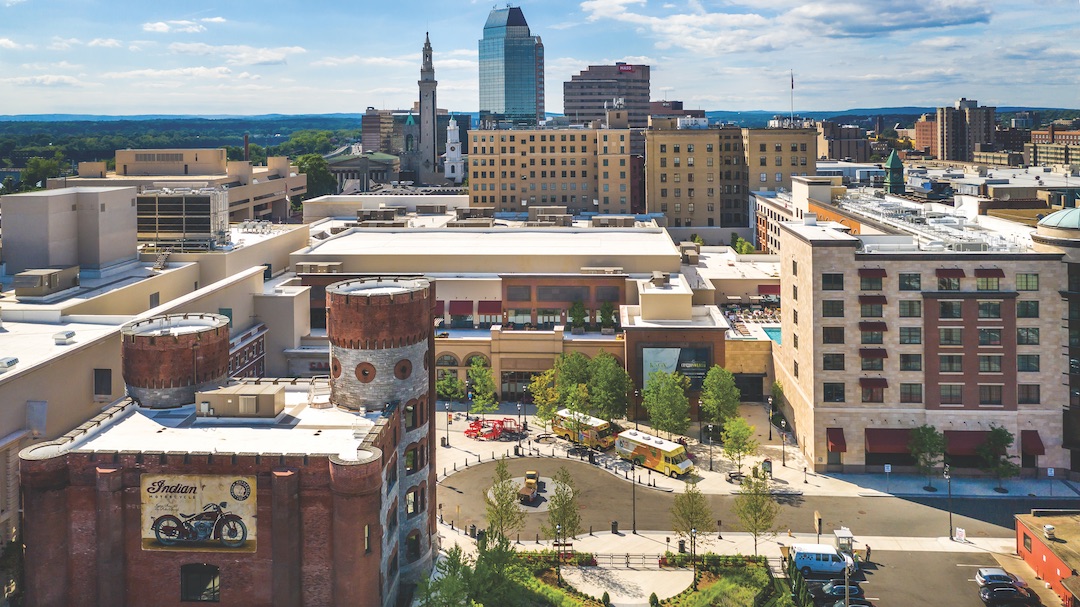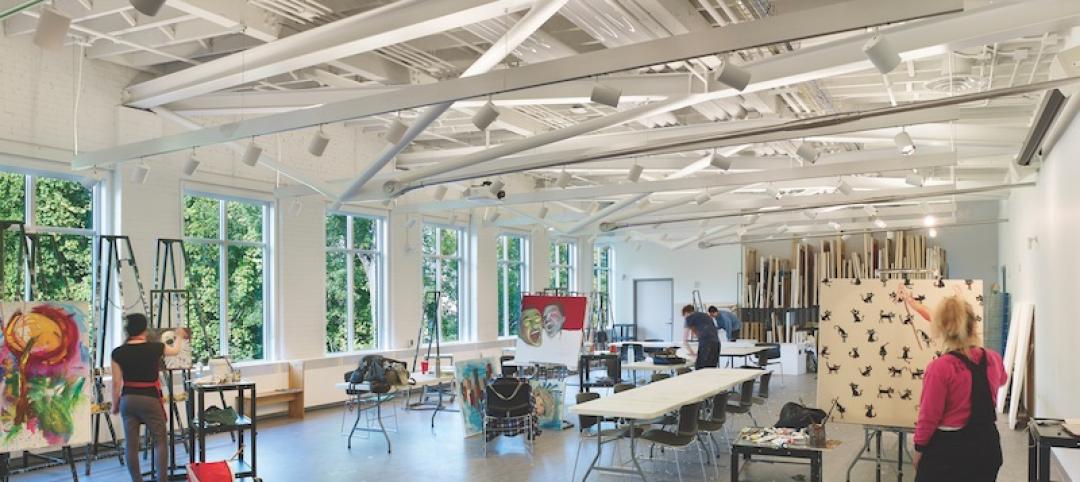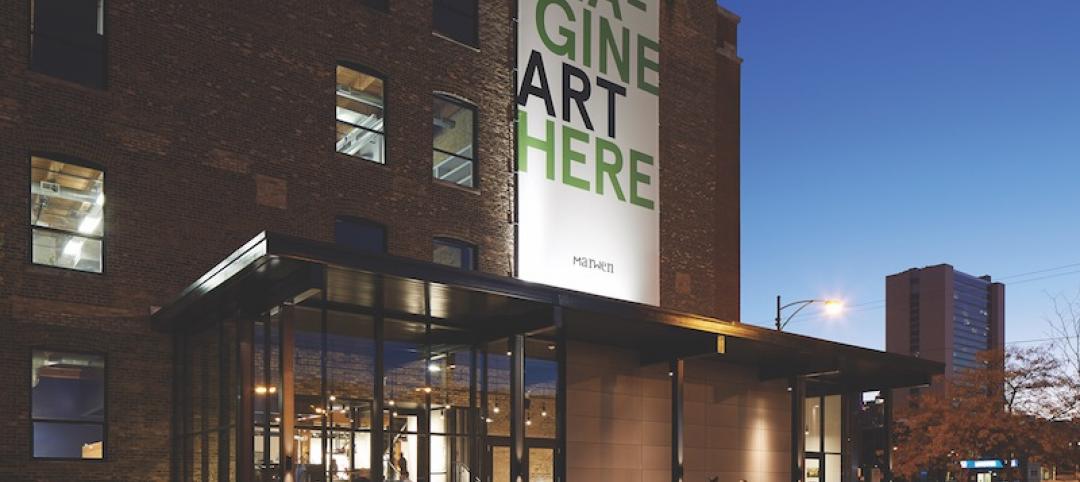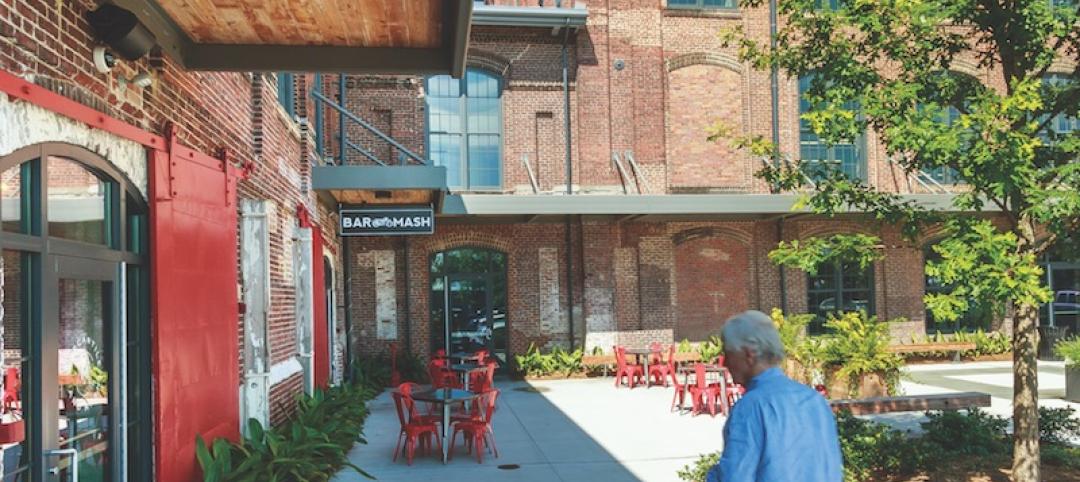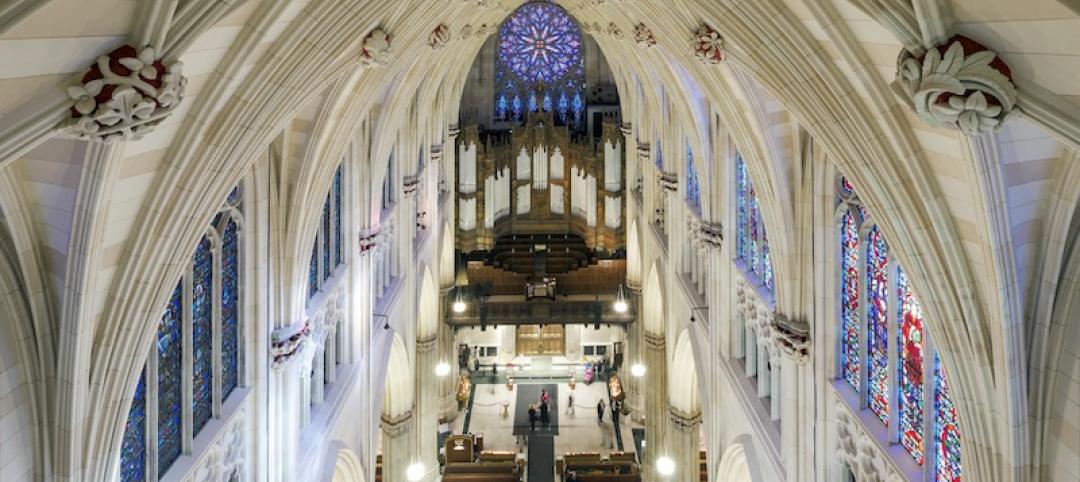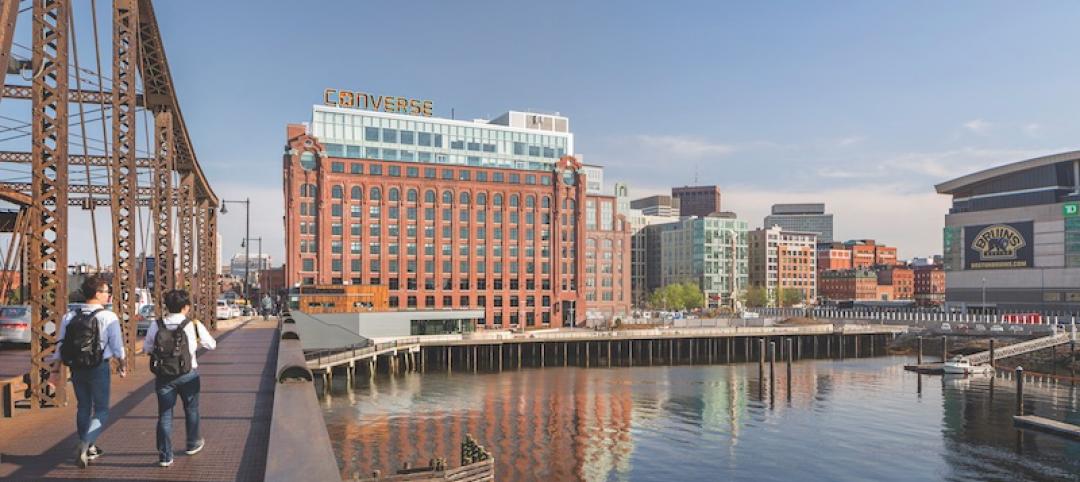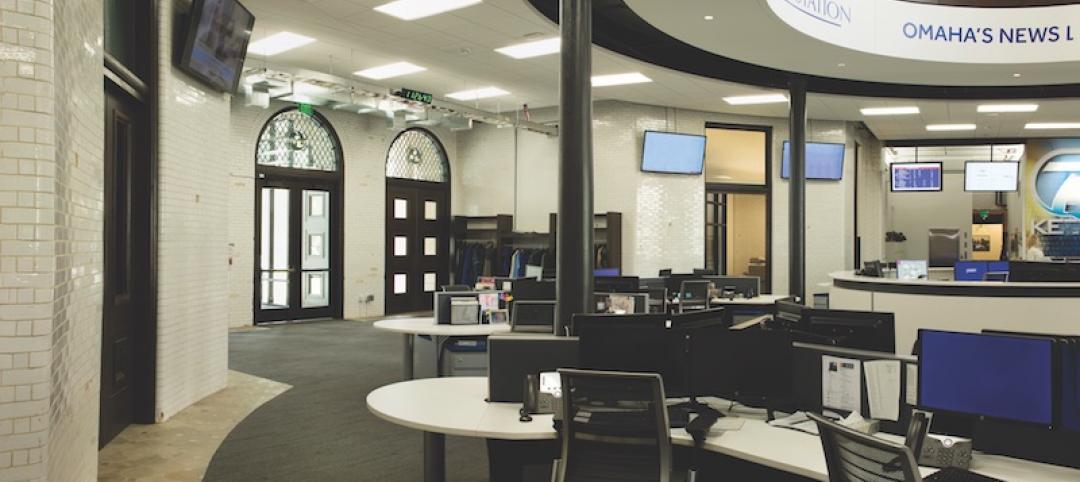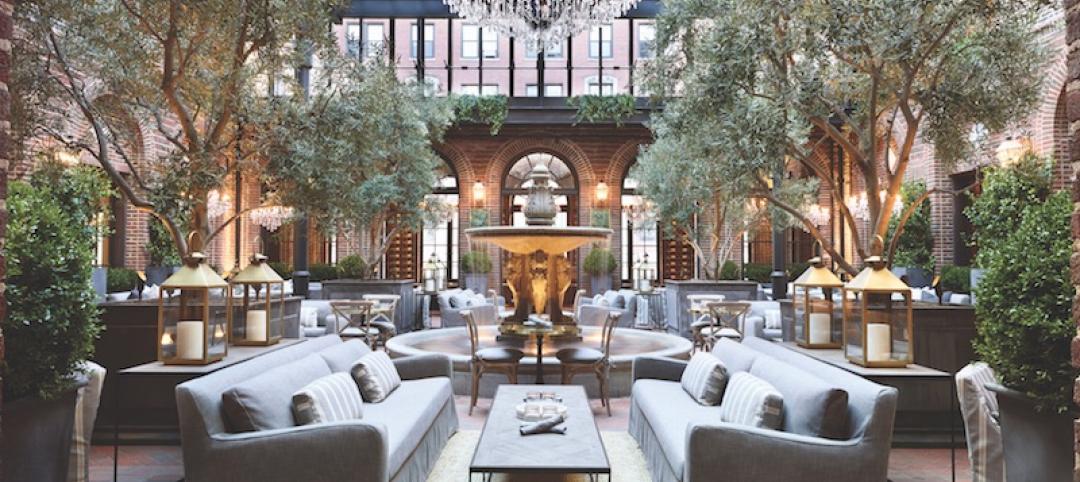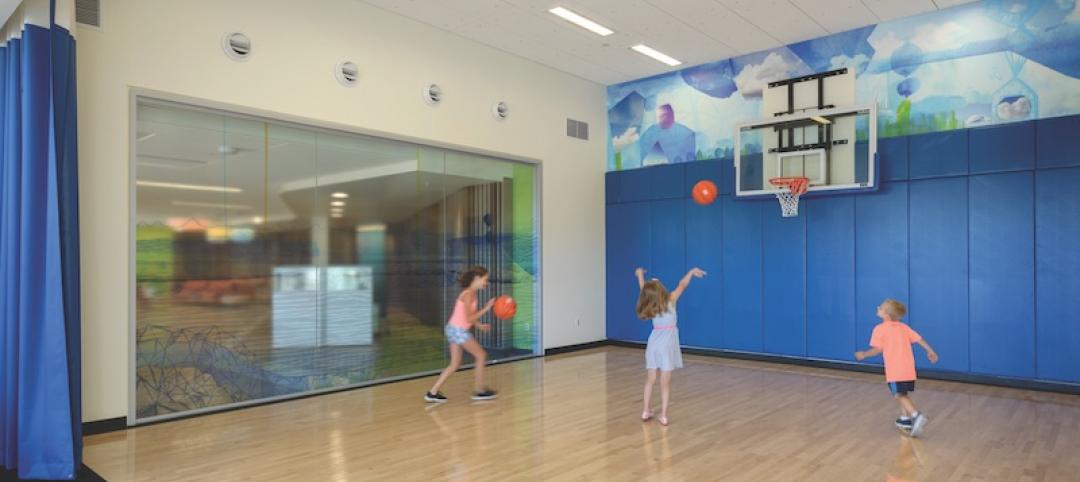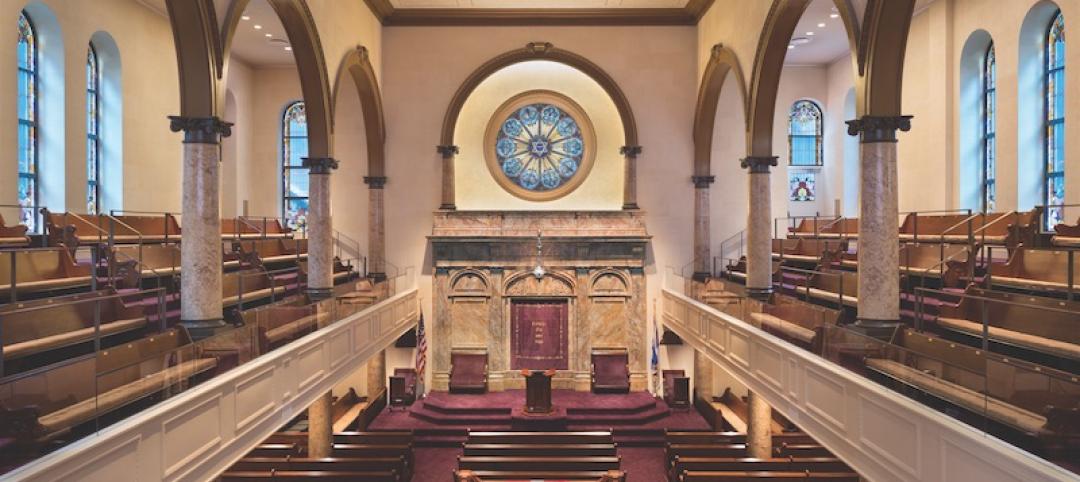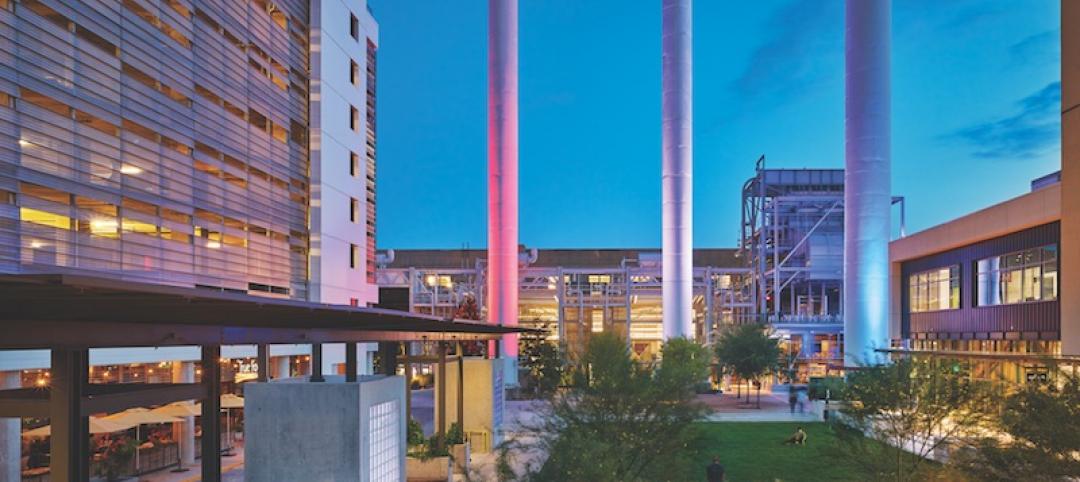The six-story MGM Springfield is the first full-service casino in Massachusetts. It occupies 14 acres over three city blocks and includes a 250-key hotel, a 125,000-sf casino, 46,000 sf of event space, and parking for 3,400 vehicles.
The downtown that this complex is intended to revitalize is a mixture of historic properties, modern high-rises, and remnants of Springfield’s history as America’s arms manufacturer from 1777 to 1968. It also included empty parcels whose buildings were devastated in a 2011 tornado.
MGM chose to preserve and integrate several historic structures into its development, notably the State Armory, the First Spiritualist Church, several office buildings, and the façade of the United Electric Company Building and Union House Hotel.
The project is the culmination of five years of planning, design, and construction. Prior to construction, the site underwent a multiphase transformation. Early planning identified a central plaza and an open-air market framed by exposed steel trusses to provide a vital, human-scale link within the complex. To anchor one end of the plaza, the project team moved the 130-year-old First Spiritualist Church from its original location—which is now occupied by the casino’s gaming floor—to a spot along Union Street, 200 yards across the casino site. The relocation was accomplished in a single day.
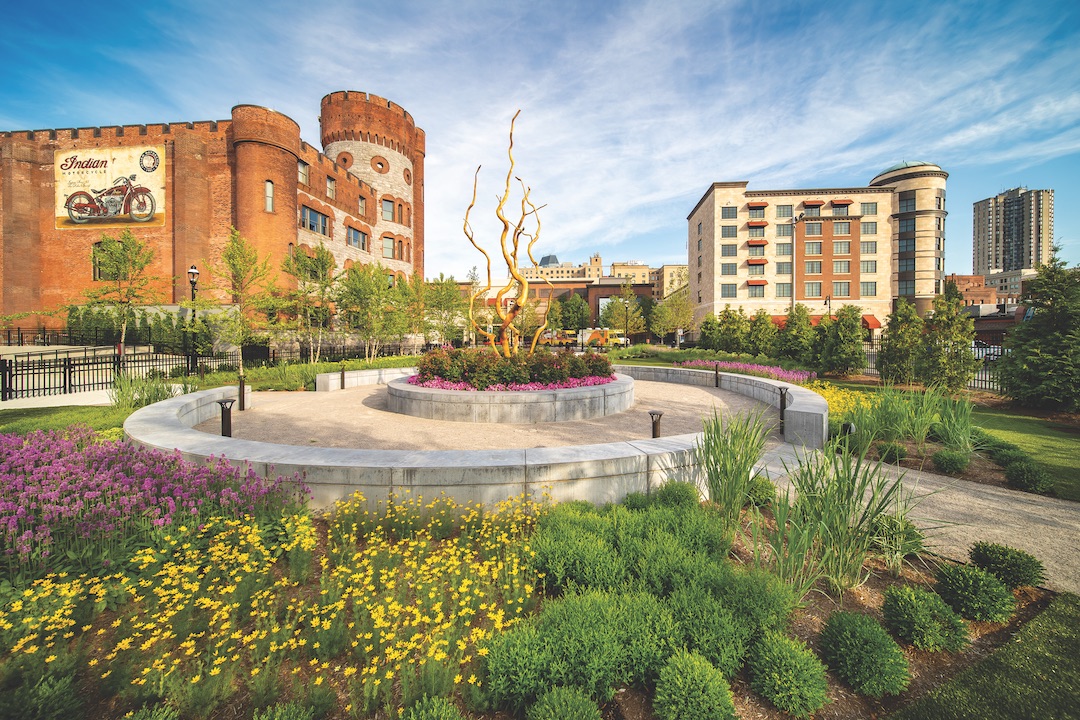 Photo: CHODOS, Inc.
Photo: CHODOS, Inc.
The team erected temporary supports to safeguard two façades: the 172-year-old Union Hotel House and the Beaux Arts-style 73 State Street, built in 1910 for the United Electric Light Company. Its granite façade and ornate stained-glassed dome were refurbished and reincorporated into the casino.
MGM Springfield’s new buildings were designed to match the existing streetscape along Main Street, which required the innovative use of a precast plank structural system to minimize the building heights and ensure flexibility in the façade designs.
The long-vacant State Armory building, originally built in 1895 for a volunteer militia, was completely gutted. All of its floors and interior bearing walls were removed to accommodate the new development’s expansive dining and entertainment venue. The project team erected a steel structure inside the armory’s 70x70-foot shell to support the ground floor and roof. The structure used 15 tons of steel erected 50 feet in the air to support the existing 24-inch-thick masonry turret walls above.
A second existing building at 95 State Street was repurposed to house casino operations on the upper floor. The casino’s main poker room is positioned on the ground level. In areas where casino operations required additional live-load capacity that exceeded existing limits, the concrete-encased steel floor framing was load tested using as many as 500 55-gallon drums filled with water.
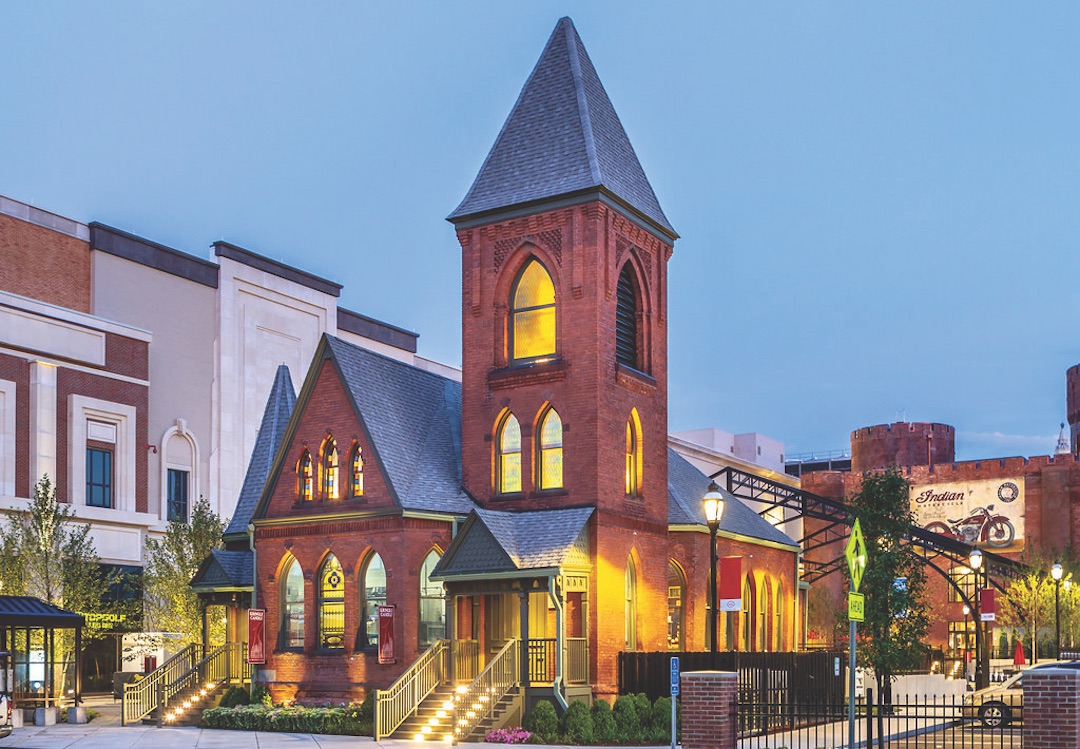 The First Spiritualist Church was relocated whole in one day to make way for the casino’s gaming floor. Photo: CHODOS, Inc.
The First Spiritualist Church was relocated whole in one day to make way for the casino’s gaming floor. Photo: CHODOS, Inc.
MGM Springfield honors the city’s rich history as America’s first armory and the birthplace of the Springfield rifle. The development serves as a catalyst for the continued renaissance of the downtown center. A comprehensive architectural salvage program was implemented to save, preserve, and reuse architectural elements and historical artifacts. As part of this effort, historians identified artifacts and memorabilia that tell Springfield’s story to visitors.
MGM Springfield stands as a case study in how redevelopment can preserve and honor a city’s rich history while contributing to its economic, cultural, and social fabric. Immediate benefits to the community include infrastructure and transportation upgrades, new employment opportunities, and the replacement of tornado-damaged and destroyed structures with a vibrant mix of retail, dining, and entertainment facilities.
Platinum Award Winner
BUILDING TEAM DeSimone Consulting Engineers (submitting firm, SE) MGM Resorts International (owner/developer) Friedmutter Group (architect) Specs Design Group, Studio McCormack, Marshall Moya Design, Avenue Interior Design, Bishop Pass (interior architects) Giovanetti Shulman Associates (MEP) AECOM Tishman (GC/CM) DETAILS 2 million sf Total cost $960 million Construction time March 2015 to August 2018 Delivery method Fast track
Related Stories
Reconstruction Awards | Nov 16, 2016
Reconstruction Awards: Marilyn I. Walker School of Fine and Performing Arts, Brock University
The five-story brick-and-beam structure is an adaptive reuse of the Canada Hair Cloth Building, where coat linings and parachute silks were once made.
Reconstruction Awards | Nov 16, 2016
Reconstruction Awards: Marwen
Marwen currently offers 100 studio courses to 850 underserved students from 295 schools and 53 zip codes.
Reconstruction Awards | Nov 16, 2016
Reconstruction Awards: The Cigar Factory
The Cigar Factory was originally a cotton mill but became the home of the American Cigar Company in 1912.
Reconstruction Awards | Nov 16, 2016
Reconstruction Awards: St. Patrick's Cathedral
The cathedral, dedicated in 1879, sorely needed work.
Reconstruction Awards | Nov 15, 2016
Reconstruction Awards: Lovejoy Wharf
After demolishing the rotten wood wharf, Suffolk Construction (GC) built a new 30,000-sf landscaped quay, now known as Lovejoy Wharf.
Reconstruction Awards | Nov 15, 2016
Reconstruction Awards: KETV-7 Burlington Station
The 1898 Greek Revival train terminal, which was listed on the National Register of Historic Places in 1974, had been abandoned for nearly four decades.
Reconstruction Awards | Nov 14, 2016
Reconstruction Awards: The Gallery at the Three Arts Club
On the exterior of the building, masonry and terra cotta were revitalized, and ugly fire escapes on the south façade were removed.
Reconstruction Awards | Nov 14, 2016
Big-box store rescaled to serve as a preventive-care clinic
The hospital was attracted to the big box’s footprint: one level with wide spans between structural columns, which would facilitate a floor plan with open, flexible workspaces and modules that could incorporate labs, X-ray, ultrasound, pharmacy, and rehab therapy functions.
Reconstruction Awards | Nov 14, 2016
Fire-charred synagogue rises to renewed glory
The blaze left the 110-year-old synagogue a charred shell, its structural integrity severely compromised.
Reconstruction Awards | Nov 11, 2016
Adaptive reuse juices up an abandoned power plant
The power plant was on the National Register of Historic Places and is a Recorded Texas Historic Landmark.


